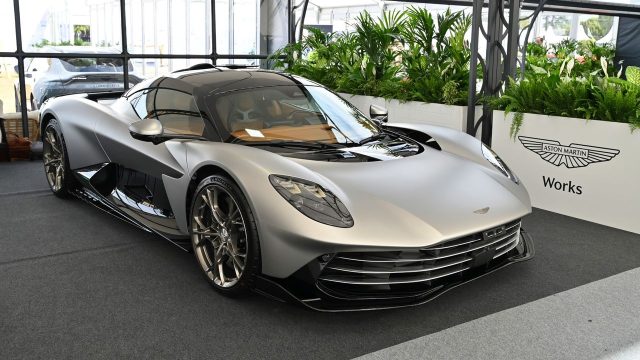
While the FTSE 100 and FTSE 250 markets have remained stable this week, Aston Martin’s share price “stood out like a beat-up old banger in Harrods’ car park”, said Ben Marlow in The Telegraph.
When it joined the London stock market in 2018, Aston Martin likened itself to industry titan Ferrari in what has since become a “ridiculous” comparison. While Ferrari “flew off the starting grid”, the British company “went immediately into reverse”, and is now “dangerously close to running out of road”.
One of Britain’s most iconic brands, the company’s performance carries “symbolic and economic weight” in the industry, said Una Hajdari on Euronews. It could be a “bellwether” for the fate of the high-end manufacturing sector.
‘Alerts and alarms’: how bad is it?
Despite its cachet with consumers, its Bond-favourite reputation has slipped to a “112-year-old marque that burns cash like an AI start-up”, said Bryce Elder in the Financial Times.
Based on estimates of cars sold wholesale since 2014, each individual vehicle has “cost the company more than £45,000 on average”, which extrapolates to a “£2.8 billion customer subsidy” in the present day.
It is only “exceptional generosity” that has kept the company afloat in the last few years, said The Telegraph. Nearly £2 billion has been collected from investors in seven separate “fund-raisings”, and billions more from banks.
Despite the “alerts and alarms” flashing on the dashboard, surrounded by missed performance targets and slumps in demand, “there is still some residual belief that Aston Martin is not heading for its eighth bankruptcy in a little over a century”, said Robert Lea in The Times.
The “Elysian fields where Ferrari hangs out” may be too much to hope for, but the eventual rollout of Aston Martin’s flagship £850,000 “Valhalla” supercar this quarter could slow the demise. The pressure on this is immense, and the company is “fully dependent” on producing “high-margin supercars” to sustain its future profitability.
A “smooth launch” of the Valhalla model could be a welcome marker that “things were finally starting to turn the corner,” experts told Carwow. If the introduction fails to materialise, dogged by previous delays and disruptions faced by the project since it was announced in 2021, then this could be the “final straw” for investors.
‘Brunt’ of American tariffs
Aston Martin’s sliding demise is a “stark reminder that prestige cannot shield a brand from tariffs and sluggish demand”, said Euronews.
Unlike other larger British or foreign car-building companies, Aston Martin has no American base for manufacturing, meaning it cannot “avoid the brunt of the tariffs” by expanding further into US production. As a result, Aston Martin must make “costly trade-offs”, by absorbing tariff hits, which restricts profit margins, or delaying deliveries, which “stalls” revenue.
Donald Trump’s tariffs “ravaged” Aston Martin’s US sales, and the company faces “new taxes on luxury cars” in China, said Jonathan Prynn in London’s The Standard.
Though undoubtedly a major thorn in Aston Martin’s side, tariffs are not the company’s only concern, said the BBC. In February, before any tariffs were announced, the manufacturer cut 170 jobs, after witnessing “losses widen by a fifth” last year as their debts began to “pile up”.
The car manufacturer, famous for its association with the James Bond franchise, is ‘running out of road’






